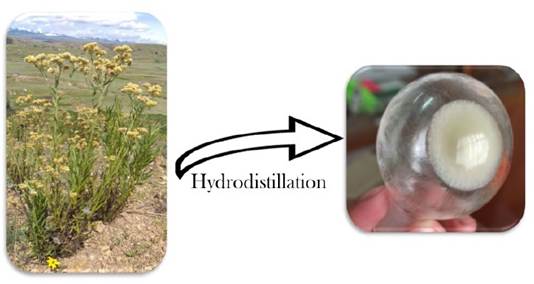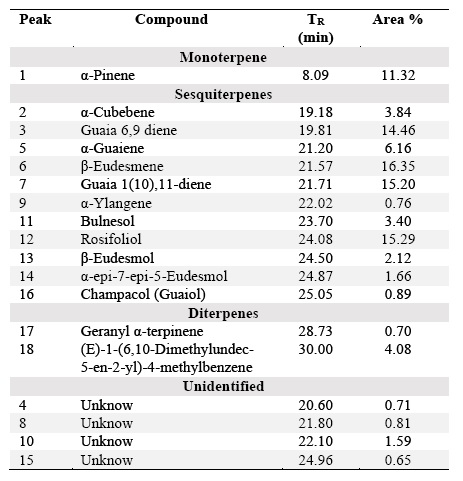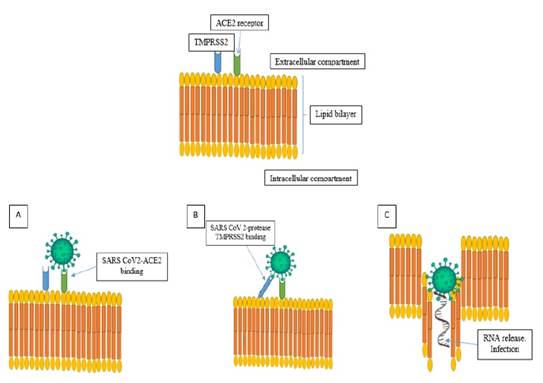INTRODUCTION
Pseudognaphalium is a large genus being part of the tribe Gnaphalieae (Asteraceae) with about 90 to 95 % annual, biannual or perennial species distributed in America. It is also present in less quantity in Asia and Africa 1,2. Previous studies about Pseudognaphalium genus reported the presence of flavonoids and their glycosylated derivatives, diterpenoids and sterols 3), (9. The composition of the essential oil of Pseudognaphalium species, include α-pineno, α-(z)-ocimeno, β-phellandreno, (E)-nerolidol, 1,8 cineol, β-felandreno, germacreno D, germacreno B, and espatulenol among others 10), (11.
Pseudognaphalium gaudichaudianum (DC.) Anderb. is distinctive for being a flowery material that is found throughout the whole year, blooming intensively between January and May. It is distributed in Bolivia, Peru, Colombia, Ecuador, Argentina, Uruguay and Brazil 2), (12. In Bolivia, it can be found between 2500 and 4700 m.a.s.l. of altitude, mainly in La Paz, Oruro, Cochabamba, Tarija, and Santa Cruz departments. 12), (13.
Figure 1. Pseudognaphalium gaudichaudianum (Left), essential oil obtained (Right)
RESULTS AND DISCUSSION
To the best of our knowledge, this is the first chemical study of P. gaudichaudiannum (DC.) Anderb from Bolivian highlands. This plant was collected from Apuvillque community that belongs to Omasuyos province in the department of La Paz during the rainy season. The essential oil was obtained by hydro-distillation technique with a 0,03% yield, and was analyzed by GC/MS. The results presented in Table 1 show that the essential oil contains 1 monoterpene, 11 sesquiterpenes, 2 diterpenes and 4 minor unidentified compounds. The structures are shown in figure 2. When the identified compounds were compared with common compounds from Pseudognaphalium genus, we found that α-Pinene was the only compound they have in common 11, which possesses an interesting antiviral activity 14.
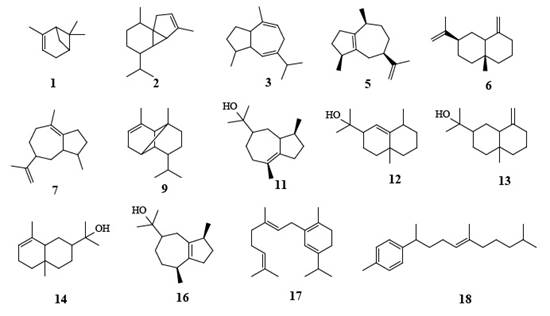
Figure 2 Chemical structures of the compounds present in the essential oil from P. gaudichaudianum. The names of each numbered compound are presented in Table1.
SARS-COV-2 infection process and possible prevention
Viruses unlike bacteria, need host cells to survive, because they cannot carry out metabolic processes on their own. The mechanism of viruses begins with productive infection, where they use the cell as a viral expression machine. In the end, the host cell could have produced between 10 and 10,000 viruses, depending mainly on the type of cell affected 15), (16. The entire sequence of viral infections occurs in eight definite steps. It begins with the entry of the virus into living organisms to give rise to infection, but an essential step is the incubation period. During this stage the symptoms of viral illness may or may not be present. However, the contagious period can occur in the next step by releasing the virus. The final step is resolution of the infection 17.
SARS-Cov-2 has been a viral respiratory illness originated in Wuhan, China (2019), and its expansion in the world increased exponentially 18. Its contagious mechanism is similar to that described before, because it begins with the virus entry into the organism. Then, when it comes into the host cell, it is recognized by ACE2 receptor in the epithelial cells from lung alveoli (figure 3.A). Later, the virus links with TMPRSS2 that allows the fusion of virus-cell membrane (figure 3.B). The last step is the release of viral genetic material to the host cell (Figure 3C) for its expression, replication and virus incubation 19), (20.
For a long time, it has been known that essential oils have anti-inflammatory, immunomodulatory, bronchodilator and antiviral properties 21. That is why we hypothesize, that it could help to treat COVID.19 infection. Because of the apolar nature of essential oils, it is estimated that these can come into the membrane cell to break it up and avoid entry of the virus to the cell 21 (Figura 4.A). While other authors claim that essential oils inhibit virus binding with ACE2 receptor through a competitive inhibition (Figure 4.B), these mechanisms must be studied deeply by molecular docking and experimental results 21), (22.
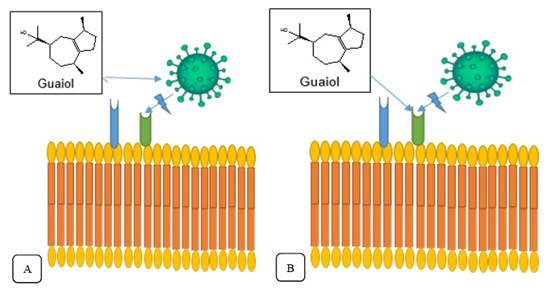
Figure 4 Mechanisms of viral inhibition by SARS-CoV-2 A) Destruction of the viral wall by the interaction of essential oils. B) Competitive inhibition by essential oil and virus to the SARS-Cov-2 receptor ACE2 protease binding site.
Various research groups made in silico studies about compounds present in essential oils that could prevent COVID-19 effects. Compounds like (E,E)-α-farnesene, €-β-farnesene, (E,E)−farnesol 18, anethole, cinnamaldehyde, carcacrol 23 , allyl disulfide and allyl trisulfide [24] could possess an activity inhibitory of the receptor proteins and enzymes that intervene in COVID-19 infection process. Previous in silico studies played an important role in accelerating the drug discovery process. In Parallel, an in vitro study of different kinds of essential oils shows that geranium (Citronellol, Geraniol and eryl acetate) and lemon (Limonene, γ-Terpinene and β-Pinene) inhibit the Angiotensin-converting enzyme 2 (ACE2), that acts as a transmembrane receptor. Thus, this fact could block the Coronavirus entry into the host cell 25.
A study made using molecular docking by My et al. 22, evaluated the binding of Melaleuca cajuputi essential oil components on ACE2 human receptor proteins and PDB6LU7 protease from SARS-Cov-2. This study showed that 10 of 22 essential oil compounds were active as pure components, but their activities increased by synergism against proteases, inhibiting and preventing the virus-host cell interactions. The compounds that have activity in M. cajuputi essential oil are Guaiol and β-Eudesmol. They are also present in P. gaudichaudianum, as well as other major compounds like β-Eudesmene, Rosifoliol, β-Eudesmol and γ-Eudesmol, which are eudesmane sesquiterpenes. Other eudesmane derivatives, guaiol and α-Pinene (present in several essential oils) through in vitro and in silico experiments, showed a promising anti-SARS-CoV-2 activity due to a potential inhibitory effect on the protease Mpro of the virus 26), (30. These compounds could suggest that the essential oil from P. gaudichaudianum may have inhibitory activity. Further studies will be needed to confirm their potential activity.
To prevent COVID-19, many aromatic plants have been used in Bolivia by the population such as: Eucalipto (Eucalyptus globulus), wira wira (Achyrocline alata, A. satureioides, A. venosa, Gnaphalium cheiranthifolium, Gamochaeta spp.), manzanilla (Matricaria chamomilla) 31, and also the use of Mentisan , a commercial product that contains α-Pineno, β-Pineno and 1,8-Cineol 32), (33 . Medicinal plants, as P.gaudichaudianum, have been used safely for generations which support its use as potential treatment for diseases as COVID-19, but more scientific research is needed to prove their efficacy, effectiveness and safety.
EXPERIMENTAL
Plant material
The sample was collected approximately at 3800 m.a.s.l. in Apuvillque community, in Omasuyos province, department of La Paz, GPS coordinates were 16°07'31.9"S-68°37'40.5"W, on December 2020. The material was identified by Alfredo Fuentes Ph.D. A specimen voucher is deposited in National Herbarium of Bolivia (LPB) under the code AF-1.
Extraction of essential oil
The essential oil was extracted from fresh plant material (3.9 kg of aerial parts), using hydro-distillation technique. The parameters used were: 3.5 hours for the extraction, after that time the oil was obtained as a yellow solid, with a yield of 0,03%. The oil was stored at 4ºC until analysis by GC/MS.
GC/MS parameters and characterization
The gas chromatography instrument (GC2010 PLUS) was coupled to a mass spectrometer (QP 2020), both from SHIMADZU Scientific (Japan), with a Sil MS RESTEK 5% diphenyl and 95% dimethyl polysiloxane column with a size of 30 m x 0.25 mm and 0.25μm film thickness dimensions.
One milligram of the solid sample obtained from hydrodistillation of the plant was dissolved in 2 ml of n-hexane with 98% purity. Later, it was filtered through a PTFE filter of 0.2 μm of pore size, in order to be injected to the GC/MS. The injection volume was 1 μL, the total flow was 15.6 mL/min, the column flow was 0.60 mL/min, the injector temperature was 210ºC. The temperature began at 40ºC for 2 minutes then increased to 210ºC at a speed of 2ºC/min during 5 minutes. The ionization temperature was 23ºC, and the temperature of the interface was 280ºC. The compounds’ characterization was obtained comparing the samples’ mass spectrum with the ones in the library database (NIST14).
CONCLUSION
This is the first chemical study of the essential oil from aerial parts of P. gaudichaudianum species, which shows interesting terpenoids reported for the first time in this genus. Considering its traditional use and its recent applications for COVID-19 prevention, we propose that the essential oil of this species could help prevent COVID-19 infection due to the presence of bioactive terpenoids and the synergy between them, which must be validated by in vitro and in vivo studies.












 uBio
uBio 
